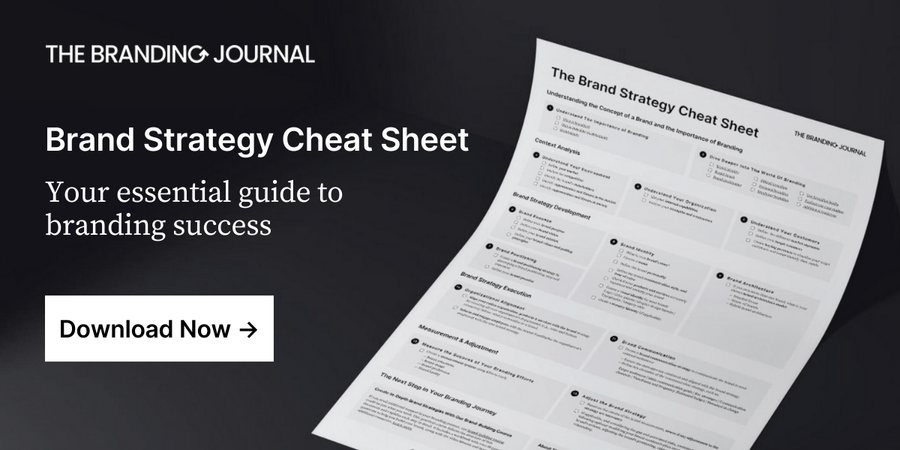A fundamental objective of marketing is to grow revenue. How? By building a strong brand while driving short-term sales.
Brand strategy, which encompasses both long-term brand-building and short-term performance marketing, plays a vital role in achieving this goal.
The challenge lies in finding the right balance: cultivating brand equityBrand equity represents the value of a brand. It is the difference between the value of a branded product and the value of that product without that brand name attached to it. Learn more that supports customer preference and customer affinity over time while also achieving measurable, immediate results.
To reconcile these strategies, marketers need a nuanced approach that considers different business types, evolving objectives, and commercial realities.
In this article, we’ll show you how to achieve this balance with practical tips and strategies.
Proven Systems for Business Owners, Marketers, and Agencies
→ Our mini-course helps you audit and refine an existing brand in 15 days, just 15 minutes a day.
→ The Ultimate Brand Building System is your step-by-step blueprint to building and scaling powerful brands from scratch.
Table of Contents
The Fundamentals: Brand Building vs. Performance Marketing
Effective marketing is built on a deep understanding of two core disciplines that, when combined, can make brands succeed both short-term and long-term. Let’s clarify the difference between the two concepts:
- Brand Building defines several aspects of the brand, including its identity and positioning. Branding drives consumer and other stakeholders’ preferences in the long term. It shapes perceptions, creates emotional bonds, and strengthens loyalty – resulting in long-term growth, equity, and differentiation.
- Performance Marketing generates quick, measurable results through targeted tactics like ads, clicks, and conversions. It focuses on short-term metrics like return on ad spend (ROAS) and cost-per-acquisition (CPA) to drive immediate revenue.
Together, these approaches create a strategy that balances fast impact with lasting brand strength and customer loyalty.
Evaluating Brand Strategy with Commercial Metrics
Understanding the ROI of brand-building activities has been widely debated. Performance marketing delivers measurable outcomes like cost-per-click (CPC) or returns on ad spend (ROAS), but the brand-building impact is often less direct.
Several methods, however, link brand strategy to commercial results:
- Brand Equity Measurement: Tracking brand equity involves assessing metrics such as brand awareness, consideration, and sentiment over time. Tools like brand health surveys and social listening platforms provide insights into how branding efforts translate into consumer perceptions.
- Customer Lifetime Value (CLV): One of the most critical metrics linking branding to commercial success is CLV. An increase in CLV typically indicates that brand investments are driving deeper customer relationships, increasing their likelihood to repurchase and advocate for the brand.
- Brand Elasticity of Demand: This metric measures the impact of brand strength on price sensitivity. Customers are less likely to be price-sensitive if a brand is perceived as strong, allowing businesses to command higher margins.
- Share of Voice (SOV) vs. Share of Market (SOM): Research by Les Binet and Peter Field (reference at the end of the article) demonstrates that when a brand’s SOV exceeds its SOM, the brand is more likely to grow its market share. Increasing SOV through sustained marketing investment indicates future sales growth, making it a valuable metric for evaluating brand strategy.
- Emotional and Rational Brand Value Metrics: Evaluating both the emotional connection consumers feel towards a brand (e.g., brand love, loyalty) and rational factors (e.g., perceived quality, value for money) can help link brand-building activities to commercial outcomes.
For instance, studies by Kantar have shown that brands with high “meaningfully different” scores are more likely to achieve strong sales growth. The implication is that brand-building creates differentiation, which in turn drives revenue.
In Practice: How to Maximize Performance While Cultivating Your Brand
Now that we’ve explored the fundamentals of brand building and performance, how can we concretely allocate resources, balance objectives, and implement these approaches to drive both short-term results and long-term growth?
1. Aligning Objectives: A Framework for Budget Ratios
Effective brand strategy requires marketers to allocate budgets across different marketing objectives, reflecting both the short-term and long-term goals of a business.
Marketing goals are not limited to brand building and performance marketing; they also include customer acquisition, retention, and demand generation, each of which requires a different approach:
- Brand Building: Long-term investments that create emotional connections and build equity.
- Customer Acquisition: Short-term strategies aimed at generating immediate sales from new customers.
- Customer Retention: Enhancing customer loyalty and lifetime value by deepening relationships.
- Product Awareness: Campaigns that introduce or expand the reach of a product.
- Demand Generation: Stimulating market interest at different stages of the customer journey.
While each marketing goal—whether focused on brand building, customer acquisition, retention, product awareness, or demand generation requires a distinct approach, budget allocations should reflect the strategic importance of each to the business. Different budget ratios enable brands to balance long-term brand equity with the immediate needs of performance marketing, tailored to their unique market dynamics and goals.
So, how can we put this into practice?
Budget ratios should be tailored based on the business type and market dynamics:
- High-Affinity Brands (Luxury Goods, Lifestyle): For brands where emotional connection is key, a 70/30 split favoring long-term brand investments is often appropriate. Such businesses benefit from sustained brand equity, which supports premium pricing and repeat purchases.
- Transactional Businesses (E-commerce, Subscription Services): For companies where frequent transactions drive revenue, a 60/40 or even 50/50 split ensures that brand-building efforts provide a foundation while performance marketing drives conversions.
- Low-Involvement Categories (Fast-Moving Consumer Goods, Low-Cost Items): Here, the primary goal is maintaining top-of-mind awareness and driving repeat purchases. A 65/35 ratio allows for continuous brand presence, supplemented by targeted performance marketing to capture immediate demand.
Les Binet and Peter Field’s seminal work, The Long and the Short of It, argues for a 60/40 investment split, with 60% directed toward brand-building and 40% toward sales activation. This ratio is based on the observation that while brand-building efforts yield compounding returns over time, sales activation provides the immediate boost needed to maintain market momentum.
Additionally, businesses maintaining brand-building investments during downturns typically emerge stronger, having expanded their market share while competitors cut back. In times of economic uncertainty, a balanced brand strategy that integrates long-term investments with short-term performance can be a powerful tool for growth.
To illustrate this idea, let’s take the example of Airbnb. Before its 2021 brand campaign, the brand had primarily relied on performance marketing to drive bookings. The brand’s first large-scale global campaign in five years, “Made Possible by Hosts,” marked a significant shift back to brand-building efforts, resulting in a 20% increase in traffic. This turnaround demonstrated that over-reliance on performance marketing can limit growth, while strategic brand investment can drive long-term value.
2. Managing the Tension with the C-Suite
Navigating tensions between brand-building investments and performance marketing is a recurring challenge in conversations with C-suite executives.
The pressure for quick returns often results in a preference for short-term performance metrics. Here’s how marketers can manage this tension:
- Educating Leadership: Communicate the long-term benefits of brand investments by using historical data and case studies. For instance, show how companies that maintained brand spending during economic downturns outperformed competitors in subsequent years. Emphasizing the “compound interest” effect of brand equity can help executives appreciate the potential for sustained revenue growth.
- Adopting a Balanced Scorecard Approach: Develop a set of key performance indicators (KPIs) that reflect both long-term and short-term goals. Metrics such as customer acquisition cost (CAC) combined with CLV or share of voice alongside brand consideration scores help align marketing efforts with overall business objectives.
- Establishing “Brand Health” Metrics as Leading Indicators: Introduce brand health metrics into quarterly reports to complement financial metrics. Tracking changes in brand perception, NPS, and emotional engagement can provide early signals of future financial performance.
- Demonstrating the Interconnectedness of Brand and Performance: Use integrated case studies where brand-building activities positively influence short-term performance. For example, Patagonia’s campaigns around sustainability not only strengthened the brand’s positioning but also drove sales growth by appealing to environmentally conscious consumers.
- Highlighting the Risk of Marketing Myopia: Overemphasis on short-term metrics can lead to diminishing returns. For example, excessive reliance on discount-driven campaigns may erode brand equity, leading to price-sensitive customers. Educating the C-suite about the risks associated with neglecting brand investments can encourage a more balanced approach. As an example, you can use the following data to back up your claims:
Research from Kantar indicated that brands favoring performance marketing over brand-building witnessed restricted growth. Brands with strong equity investments saw a 72% increase in brand value, while those that deprioritized brand-building grew by only 20%. This disparity illustrates how neglecting long-term brand strategies can weaken overall brand strength and limit market potential.
Since the inception of Interbrand’s ranking, the world’s top brands have missed an estimated $3.5 trillion in cumulative brand value, mainly attributed to an increased focus on short-term efficiencies over long-term brand-building. In the past 12 months alone, the Best Global Brands have seen $200 billion in unrealized revenue potential due to this approach, emphasising the financial risks of prioritising performance marketing while under-investing in brand equity. Source: Interbrand’s Best Global Brands Report (2024).
3. Expanding Marketing Objectives Across Timelines
A well-rounded marketing strategy comprises a range of objectives that support different time horizons:
- Immediate Revenue Generation: Campaigns targeting short-term sales spikes or holiday promotions.
- Market Penetration and Expansion: Achieving incremental growth in new segments or geographic areas.
- Sustainable Growth and Brand Equity: Building trust and reputation through consistent messaging and values-driven marketing (e.g., Ben & Jerry’s social justice initiatives).
Marketers should blend full-funnel metrics to evaluate success across stages of the customer journey. Tools like multi-touch attribution and econometric modeling can provide insights into how each campaign element contributes to broader business goals.
4. Additional Strategies to Balance Brand Strategy with Short-Term Campaigns
Managing the interplay between brand strategy and performance marketing involves more than just budget and timeframe allocation. Here’s how brands can better integrate these elements:
- Integrated Campaigns that Align Objectives: Run campaigns that support the brand narrative while also including direct calls to action. For example, John Lewis’ Christmas advertisements in the UK are emotional brand-building stories, yet they also drive sales by featuring seasonal products.
- Consistent Brand Messaging Across Channels: Use unified creative codes, such as brand colours, logos, and tone of voice, to reinforce the brand identity, even when running direct-response ads. This ensures brand equity is built simultaneously with sales activation efforts.
- Agile Marketing Approaches: Regularly reassess the investment split and campaign performance to adjust tactics based on market conditions, competition, and emerging trends. Agility allows for quick pivots between brand-building and performance-focused efforts, depending on what is needed at a given time.
The importance of a well-balanced brand strategy is perhaps best illustrated by Nike’s journey. Nike’s shift from prioritizing digital performance marketing to refocusing on powerful brand storytelling, like the “Dream Crazy” campaign with Colin Kaepernick, illustrates the critical need for a brand strategy that balances short-term wins with long-term cultural relevance. Initially, the emphasis on direct-response marketing delivered quick results, but it diluted the brand’s deeper connections.
By reinvesting in bold brand-building, Nike revitalized its cultural impact, driving sustained growth and showing that investing in a brand’s narrative can yield both immediate and enduring benefits.
It’s time for brands to think beyond short-term gains and have the courage to invest in building something meaningful; if a brand isn’t creating lasting value, it’s merely a commodity, and in a crowded marketplace, commodities don’t stand out—they disappear.
References
- Binet, L. and Field, P., 2017. Media in Focus: Marketing Effectiveness in the Digital Era. 1st ed. Warc.
- Kantar, 2024. Power growth through meaningfully different experiences. Available at: https://www.kantar.com/campaigns/power-growth-through-meaningfully-different-experiences [Accessed 28 October 2024].
- Binet, L. and Field, P., 2013. The Long and the Short of It: Balancing Short and Long-Term Marketing Strategies. IPA. Available at: https://www.alexmurrell.co.uk/summaries/les-binet-and-peter-field-the-long-and-the-short-of-it [Accessed 28 October 2024].
- The Financial Services Forum, 2022. IPA: Businesses must maintain marketing budgets during the 2022 downturn. Available at: https://thefsforum.co.uk/knowledge-centre/ipa-businesses-must-maintain-marketing-budgets-during-the-2022-downturn/ [Accessed 28 October 2024].
- Behavior Labs, 2024. How Airbnb used brand marketing to triumph over performance. Available at: https://www.behaviolabs.com/insights/how-airbnb-used-brand-marketing [Accessed 28 October 2024].
- Kantar, 2022. Modern marketing dilemmas: Where does performance marketing meet brand building? Available at: https://www.kantar.com/inspiration/brands/modern-marketing-dilemmas-where-does-performance-marketing-meet-brand-building [Accessed 28 October 2024].
- Interbrand, 2024. Best Global Brands 2024 Report. Available at: https://interbrand.com/best-brands/ [Accessed 28 October 2024].









